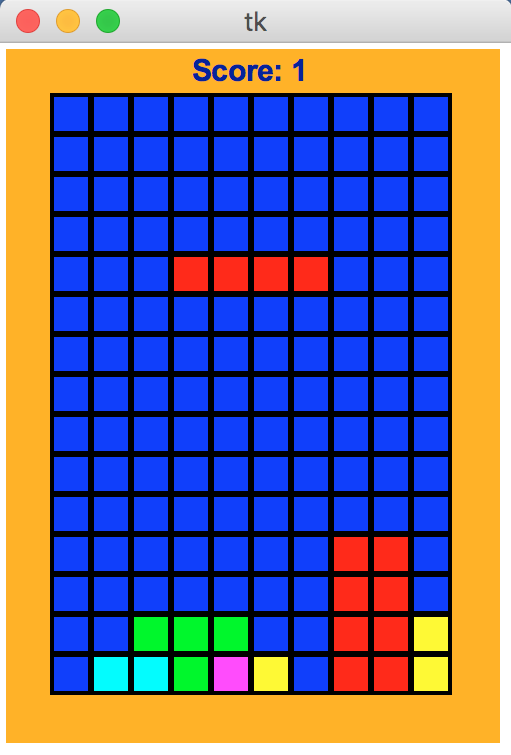Actually, this is a Java applet/program, and we will write ours in Python, but this can give you a clear idea of our design. As should be clear when you run it, this is a simplified version of Tetris, and many interesting features have been left for you to add as bonus (see Step 8 for details, though also note that bonus points vary by semester). Here is a picture of the game in action:

sPiece = [
[ False, True, True ],
[ True, True, False ]
]